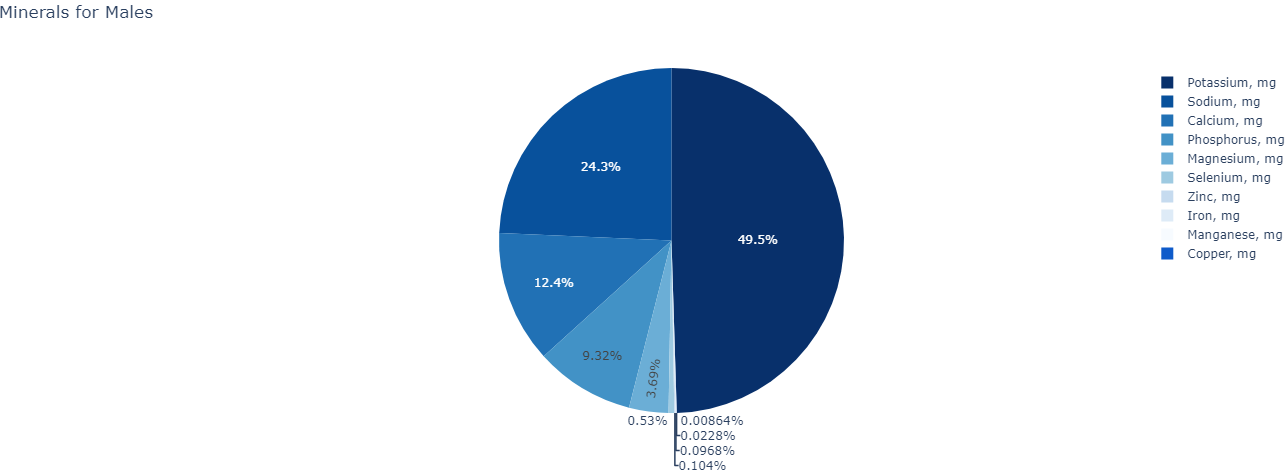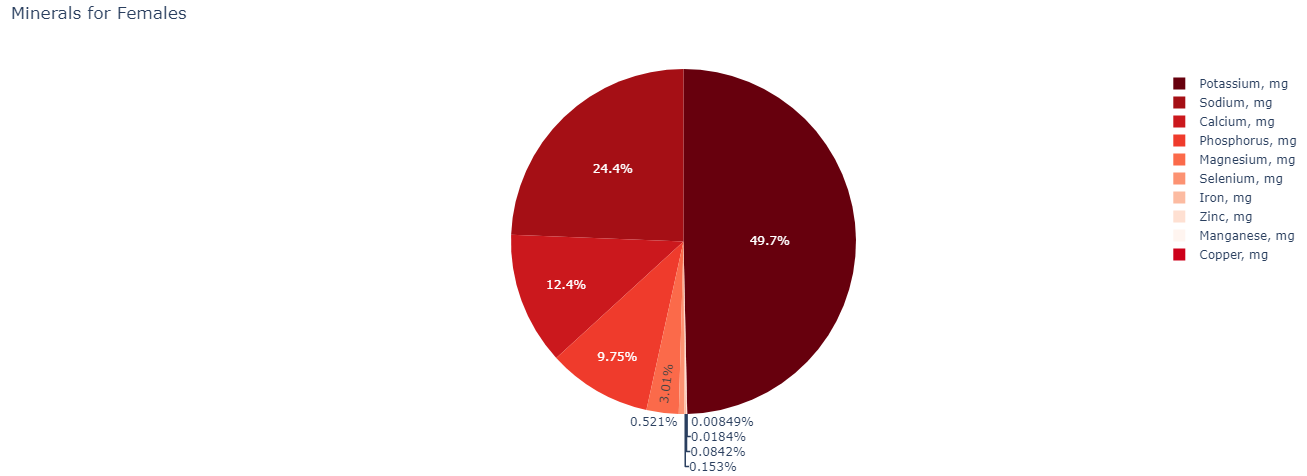Insights
Below we have our visualizations in terms of nutrional factors. Below each of the visualizations we have takeaways one can make from our visualizations and recommendations.
Overall Trends

This is the part that is tailored towards specific age groups and genders. Within this sunburst figure, one can see that 2 genders are specified: male and female. In terms of age ranges we can see that there are 1-3, 4-8, 9-13, 14-18, 19-30, 31-50, and 51+. This allows for more people to relate to a specific level of calorie intake that is needed for each of them. As the age groups become higher we can see a higher average recommended calorie intake level, however, we do see a decrease from 31-50 and 51+, as the recommended calorie intake levels come back down to 2000 from 2200. When interacting with the graph you can also see the different levels of recommended protein and dietary fibers as well. .

In this specific parallel figure, we can see that the majority of the breakfast foods are within the higher portions of the calories, this showcases that in terms of caloric intake, we would rather recommend taking cereal as an option for breakfast as it is lower in calories. The lower calorie option in this parallel chart is the fruits, which obviously wouldn’t be enough for a proper breakfast option by itself. Thus we can see through all of these that there are higher levels of calories in each of the food categories. The interesting point here is that most of the Carbohydrates are at the 130g mark.
Comparison Between Sexes
Overall Trends

We have ordered this graph from child to female and then to male age categories. With this, we can see that there is an ever-growing peak to how much calories and protein there should be in each of the breakfast foods. In addition, we can see that there is always a plateau in terms of calories and protein post-19-30 ages.
In this 3D Scatter, we can see that typically the males here are at a higher level of recommended calorie, dietary fiber, and protein portions. This can just be due to the faster-growing physical aspects needs of males over females. However, that being said, we can also see that the female population needs a high level of protein as well - thus if this came through lower-category breakfast food options it could still work out.
Male Nutrition


These are the recommended Vitamin intake through foods. An interesting thing that is a reality in our world is that most humans intake supplements that have specific vitamins - thus, we also understand that not all of the vitamins should be consumed just through breakfast, lunch, or dinner foods. Through this we can see that the highest vitamins needed are Vitamins A, D, Choline, Folate, and K as well.

Similarly understanding what macronutrients we have within foods is crucial to understanding what is good for dieting and diets. We can see that Carbohydrates are the greatest macro nutritional group that is necessary, followed by protein, dietary fiber, and the acid groups. Once again, with a healthier lifestyle, we can cut down on carbohydrates and increase protein groups in order to loosen up on sugar intake.


